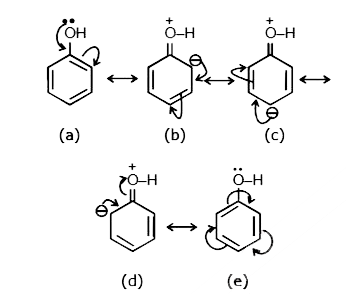If A+B>C+D and D+A<B+C, then
D>B
C>D
A>D
B>D
The correct Answer is:D
To solve the problem step by step, we will analyze the given inequalities and manipulate them to find the relationship between the variables.
Step 1: Write down the given inequalities
We have two inequalities:
1. A+B>C+D (Inequality 1)
2. D+A<B+C (Inequality 2)
Step 2: Rearrange Inequality 1
We can add D to both sides of Inequality 1:
A+B+D>C+D+D
This simplifies to:
A+B+D>C+2D(Inequality 3)
Step 3: Rearrange Inequality 2
Now, we can add B to both sides of Inequality 2:
D+A+B<B+C+B
This simplifies to:
A+B+D<2B+C(Inequality 4)
Step 4: Compare Inequalities 3 and 4
Now we have:
1. A+B+D>C+2D (Inequality 3)
2. A+B+D<2B+C (Inequality 4)
From these two inequalities, we can write:
C+2D<A+B+D<2B+C
Step 5: Isolate D
From the inequalities, we can compare the two sides:
2B+C>C+2D
Subtract C from both sides:
2B>2D
Now, divide both sides by 2:
B>D
Conclusion
Thus, we conclude that B is greater than D.
We have two inequalities:
1. A+B>C+D (Inequality 1)
2. D+A<B+C (Inequality 2)
We can add D to both sides of Inequality 1:
A+B+D>C+D+D
This simplifies to:
A+B+D>C+2D(Inequality 3)
Now, we can add B to both sides of Inequality 2:
D+A+B<B+C+B
This simplifies to:
A+B+D<2B+C(Inequality 4)
Now we have:
1. A+B+D>C+2D (Inequality 3)
2. A+B+D<2B+C (Inequality 4)
C+2D<A+B+D<2B+C
From the inequalities, we can compare the two sides:
2B+C>C+2D
Subtract C from both sides:
2B>2D
Now, divide both sides by 2:
B>D
Thus, we conclude that B is greater than D.
Topper's Solved these Questions
- BOOK - OSWAL PUBLICATIONCHAPTER - MAT STAGE 2 (2019-20)EXERCISE - M.C.Q97videos
MAT STAGE 2 (2019-20)
- BOOK - OSWAL PUBLICATIONCHAPTER - NEW TYPOLOGIES INTRODUCED BY CBSE FOR BOARD 2021-22 EXAM EXERCISE - UNIT-VII STATISTICS AND PROBABILITY (STATISTICS) (SELF ASSESSMENT)2videos
NEW TYPOLOGIES INTRODUCED BY CBSE FOR BOARD 2021-22 EXAM
Similar Questions
Knowledge Check
- Question 1 - Select One
If A+DgtC+E,C+D=28 and B+EgtC+D , it necessarily follows that
AB+D>C+EBA+B>2DCA+D>B+EDA+D>B+C - Question 2 - Select One
If a, b, c, d and e are positve numbers, and it is given that ,
a+b=c+db+d=2ad+e>a+bandc+d>a+e
then, which of the following statement is true ?Ad>a>b>e>cBd>b>e>a>cCa>b>c>d>eDa>d>b>e>c - Question 3 - Select One
If a +b > c+d and b + c> a+d, then it is definite that
A1. c>dB2. b>dC3. a>dD4. b>c
A mixture containing DNA fragments A,B,C and D, with molecular weights of A+B=C,A>BandD>C, was subjected to agarose gel electrophoresis. The positions of these fragments from cathode to anode sides of the gel would be
View SolutionState which of the following inequalities can be combined and which not? Write the combined form, if possible.
i) A>B,B>C
ii) A≥B,C<
iii) B<A,B≥C
iv) A>B,C>B
v) A≥B,B<C
vi) B>A,C>B
vii) A≥B,B≤C
viii) B≤A,B≥C
ix) A>B,C>D
x) A≤B,M≥NView Solution
a=e>b=d>cView SolutionWrite increasing order of basic strength of following:
(i). (a) Fɵ, (b). Clɵ, (c). Brɵ, (d). Iɵ
(A). a>b>c>d
(B). d<a<c<b
(C). d>a>b>c
(D). a>d>c>b
(ii). (a). CHɵ3, (b). Clɵ, (c) OHɵ, (d). Fɵ
(A). a>b>c>d
(B). d<a<c<b
(C). d>a>b>c
(D). a>d>c>b
(iii). (a). R−NH2, (b). Ph−NH2, (c). R−C∣∣O−NH2
(A). a>b>c
(B). a<c<b
(C). a<b<c
(D). a>c>b
(iv). (a). NH3, (b). MeNH2, (c). Me2NH , (d). Me2N
(A). a<b<c<d
(B). d<a<c<b
(C). d>a>b>c
(D). a>d>c>bView SolutionIf the median of a, b, c, d, and e(a<b<c<d<e) is k, then find the median of b2,c2,andd2.
View Solution

